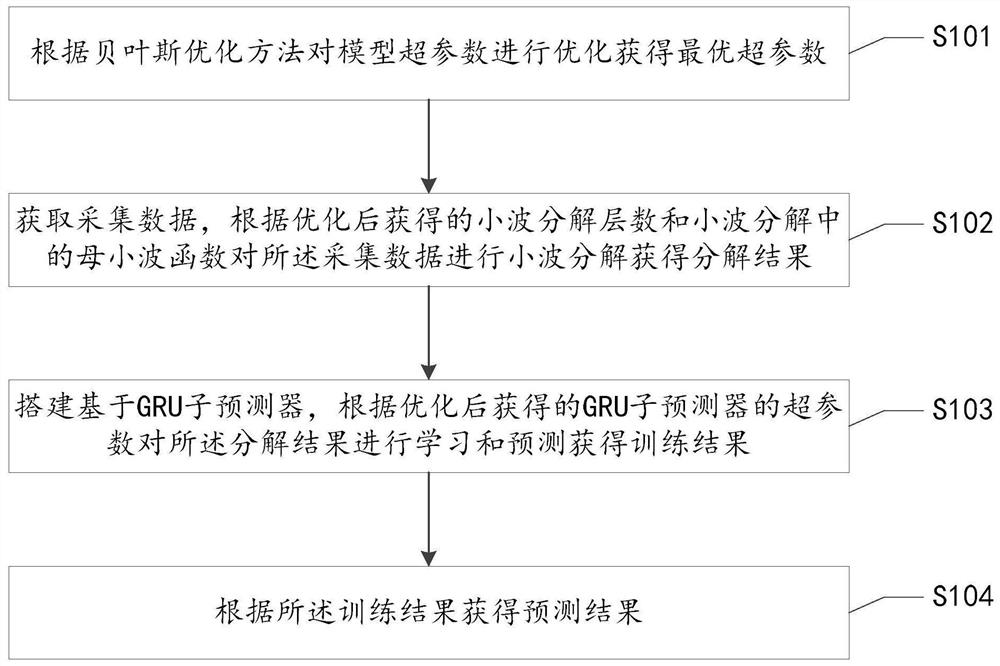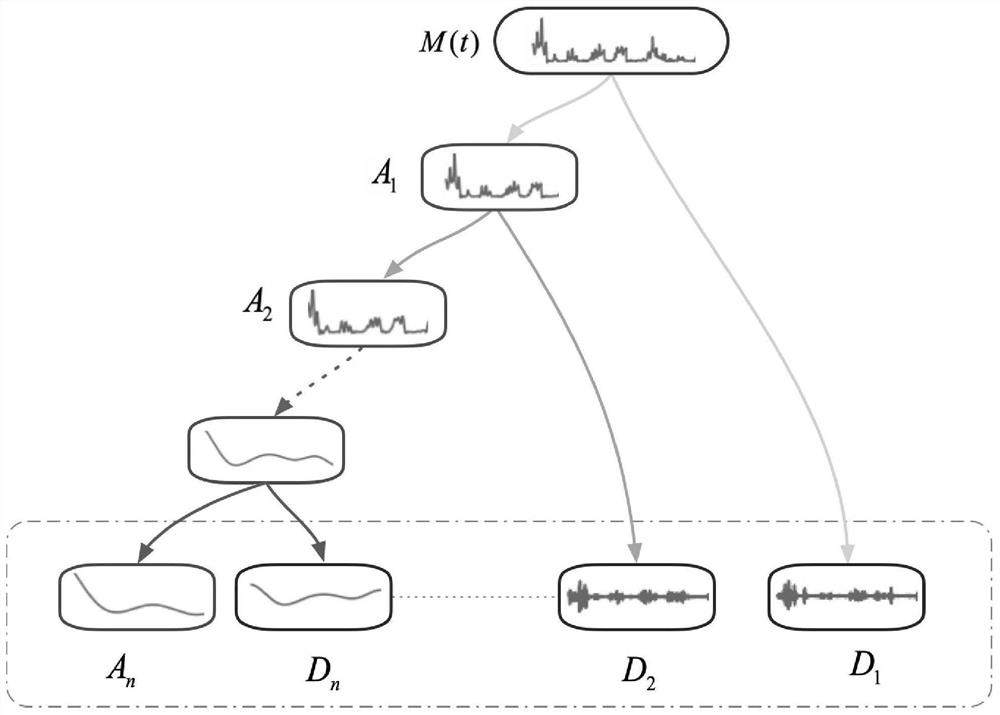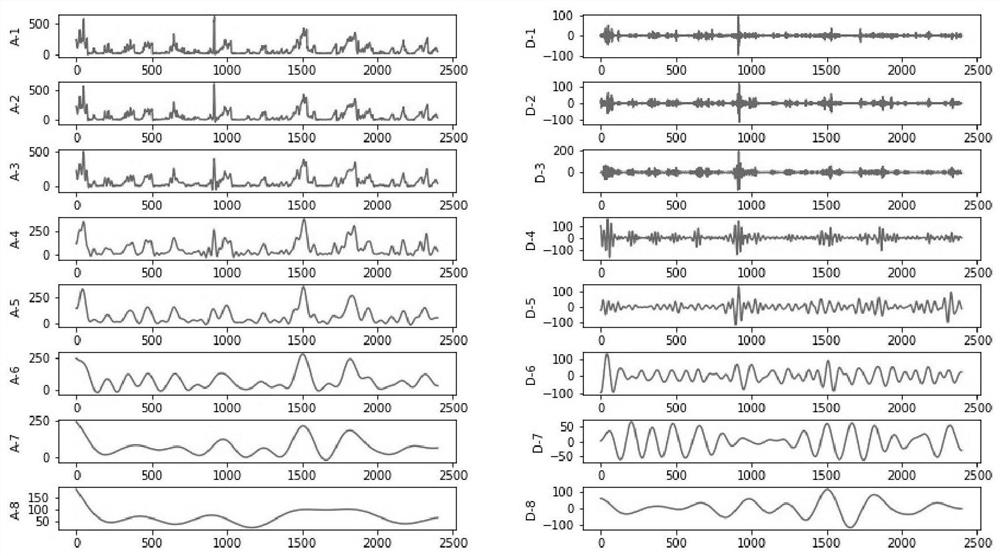Time sequence prediction method and device based on Bayesian optimization and wavelet decomposition
A wavelet decomposition and time series prediction technology, applied in neural learning methods, based on specific mathematical models, special data processing applications, etc., can solve problems such as difficulty in ensuring prediction accuracy, and achieve high accuracy and improve accuracy.
- Summary
- Abstract
- Description
- Claims
- Application Information
AI Technical Summary
Problems solved by technology
Method used
Image
Examples
Embodiment 1
[0057] like figure 1 As shown, this embodiment proposes a time series prediction method based on Bayesian optimization and wavelet decomposition, the method comprising:
[0058] S101. Optimizing model hyperparameters according to a Bayesian optimization method to obtain optimal hyperparameters.
[0059] Specifically, the hyperparameter selection of a deep learning model directly determines the performance of the model. In this embodiment, one of the Bayesian optimization methods: sequential model-based optimization (SMBO) is implemented through the python-based hyperopt library.
[0060] When using Bayesian optimization to determine model parameters, it is necessary to define an objective function and optimized hyperparameter space. Since the training process of deep learning is actually a black box, the root mean square error (RMSE) of the mixed model is used as the objective function of model hyperparameter optimization:
[0061]
[0062] Among them, m is the number of...
example 1
[0112] The method proposed in this example uses the Bayesian optimization method to determine the optimal hyperparameters. This example will demonstrate the use of the Bayesian optimization method and verify the results.
[0113] First, the data used in the experiment is explained. The research shows that the PM2.5 sequence has strong nonlinearity and strong randomness. Therefore, this experiment uses the PM2.5 data set from the US State Department, which records the data from 2013 to 2017. The average concentration of PM2.5 per hour in Beijing in the past five years, with a total of 37704 entries, and the unit of data is μg / m 3 . Set the model prediction cycle to 24 steps, that is, the function realized by the model is to predict the value of the next 24 hours for the historical data of the previous 24 hours, Figure 5 The overall structure of the model of this embodiment is shown. The test was carried out on the hourly PM2.5 content data in Beijing air from March 22, 2016 ...
example 2
[0141] In Example 1, the Bayesian optimization algorithm is implemented and the feasibility is verified. In this example, the advantages of the model proposed in this embodiment (WD-GRU) in terms of accuracy are demonstrated by comparing with other models.
[0142] First, the data used in the experiment will be explained. The data set and test set used in this experiment are the same as those in Example 1, and the prediction period is also set to 24 steps.
[0143] In this example, a comparison is made with five combined models that also include time-series data decomposition and deep networks. The combined models used include Composition-ARIMA-GRU-GRU, EMD_RNN (EMD and RNN combined), EMDCNN_GRU (EMD, CNN and GRU combined), WD-RNN (wavelet decomposition and RNN combination), WD-LSTM (wavelet decomposition and LSTM Combination) and WD-GRU (combination of wavelet decomposition and GRU) proposed in this embodiment.
[0144] Figure 7 The prediction results of these six models a...
PUM
 Login to View More
Login to View More Abstract
Description
Claims
Application Information
 Login to View More
Login to View More - R&D
- Intellectual Property
- Life Sciences
- Materials
- Tech Scout
- Unparalleled Data Quality
- Higher Quality Content
- 60% Fewer Hallucinations
Browse by: Latest US Patents, China's latest patents, Technical Efficacy Thesaurus, Application Domain, Technology Topic, Popular Technical Reports.
© 2025 PatSnap. All rights reserved.Legal|Privacy policy|Modern Slavery Act Transparency Statement|Sitemap|About US| Contact US: help@patsnap.com



